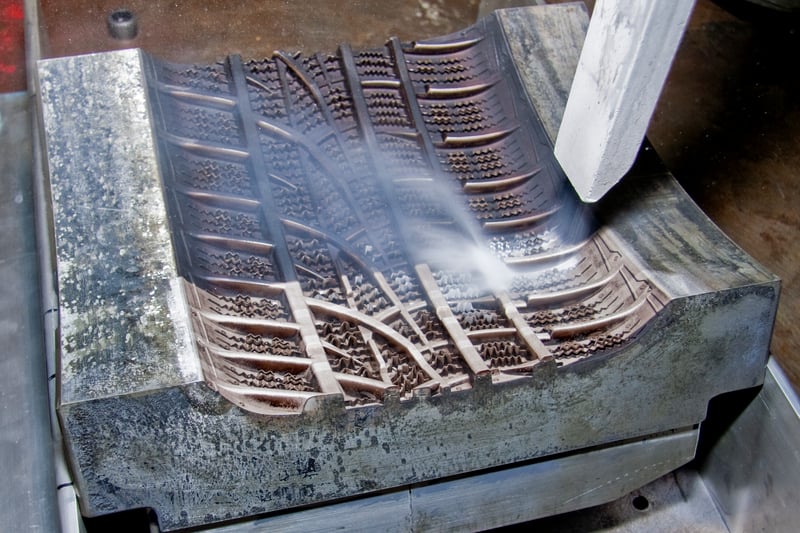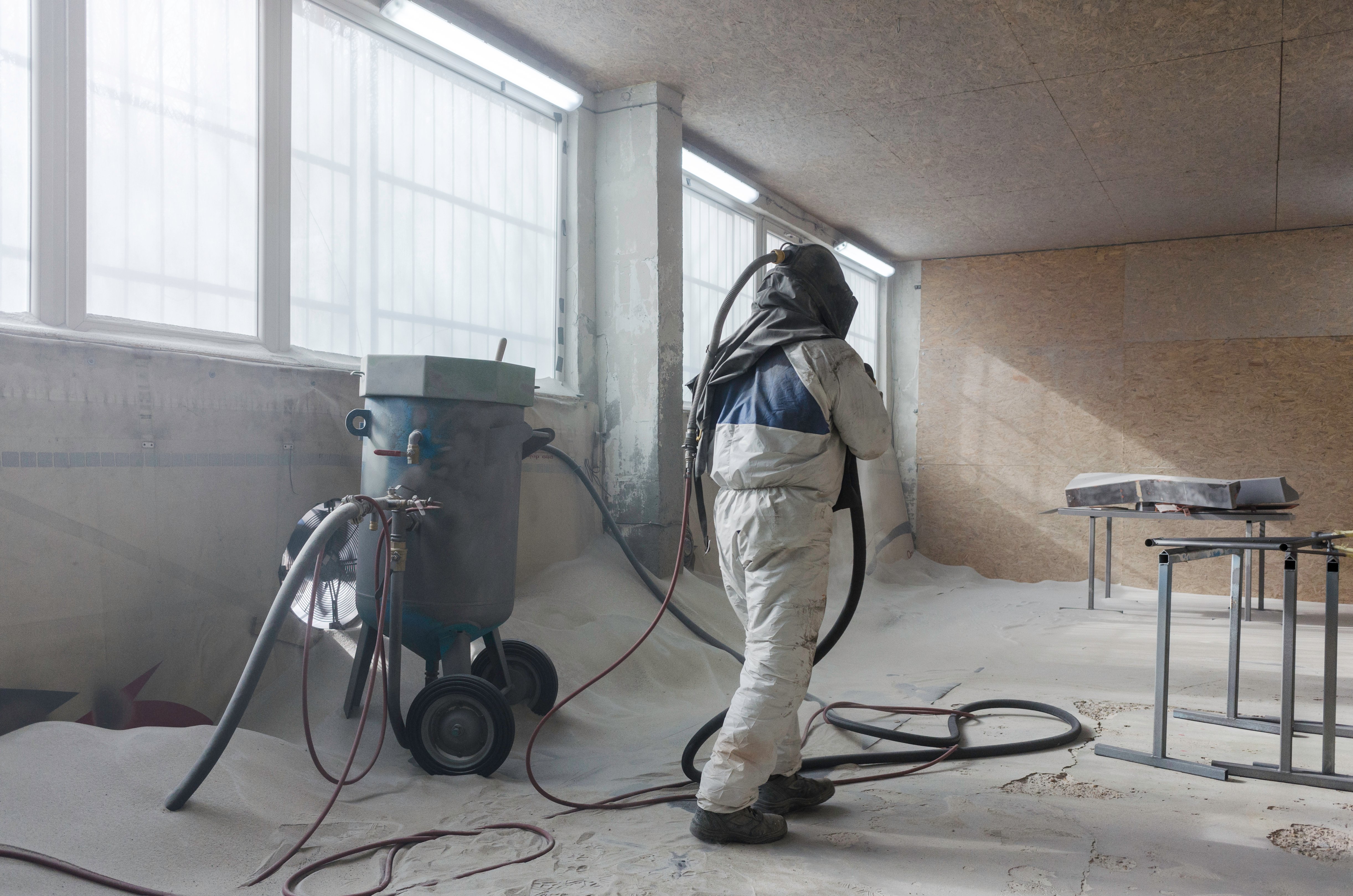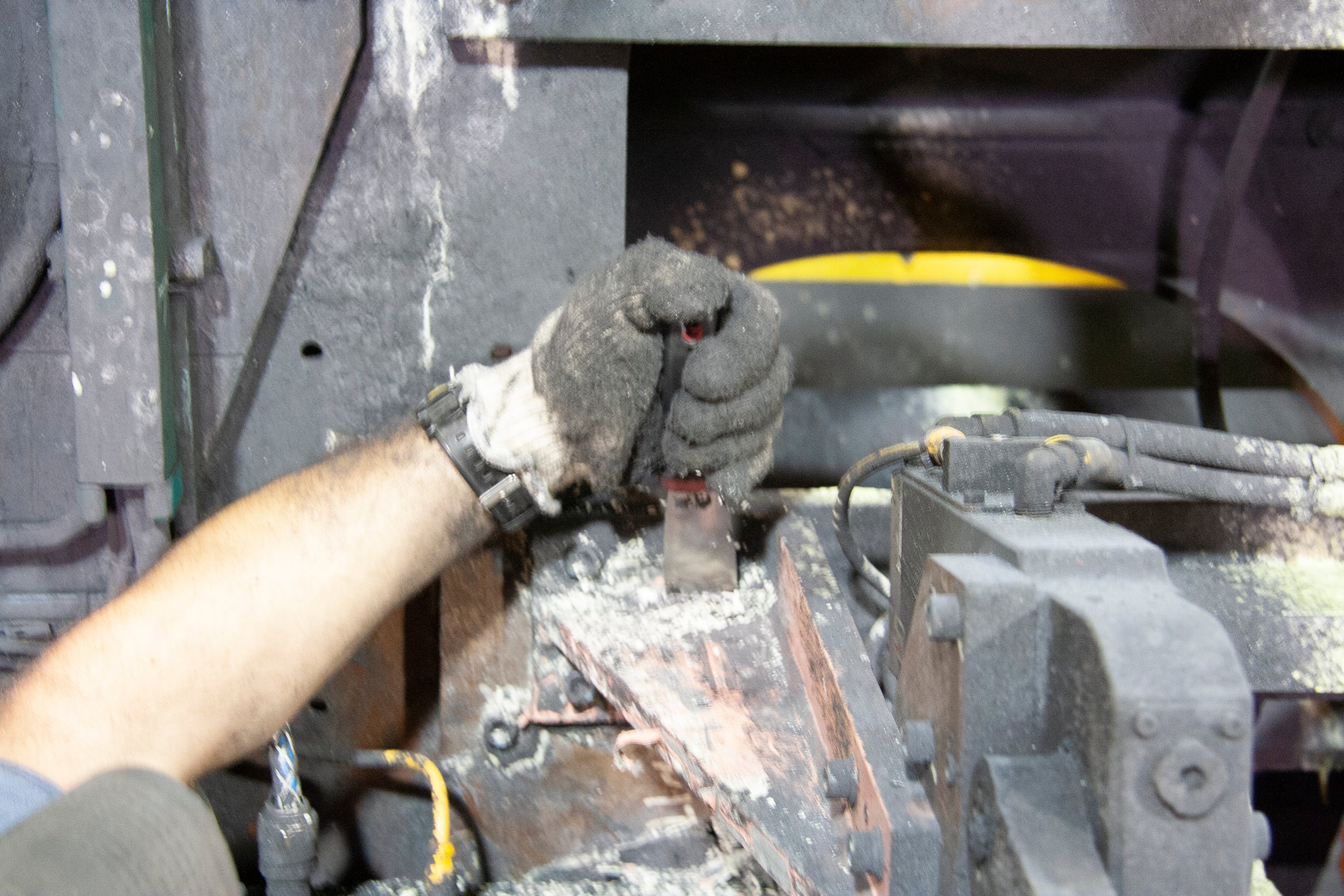How does dry ice blasting compare to other cleaning methods?
When comparing dry ice blasting to other cleaning methods, such as abrasive blasting (sand, bead, etc), soda blasting, pressure washing, chemical solvent washing and manual hand tools, it is important to ask the following questions of each:
- Is it abrasive?
- Does it create secondary waste?
- Is it environmentally responsible?
- Is it toxic?
- Is it electrically conductive?
The attributes of each cleaning method not only affect the cleaning result, but they also dramatically affect the surface area that is being cleaned, the surrounding area and also the safety of the person performing the cleaning.
Here’s an overview of dry ice blasting vs. alternative cleaning methods.
 * Upon contact, the media becomes contaminated when used to clean hazardous substances and objects. These blasting materials are also then classified as toxic waste and require appropriate safe disposal.
* Upon contact, the media becomes contaminated when used to clean hazardous substances and objects. These blasting materials are also then classified as toxic waste and require appropriate safe disposal.
Let’s review more in-depth the attributes of the following cleaning methods:
- Dry Ice Blasting
- Abrasive Blasting
- Soda Blasting
- High Pressure Water Blasting
- Solvent Cleaning
- Hand Tool Cleaning

1) Dry Ice Blasting
Dry ice blasting is similar to other media blasting methods in that it prepares and cleans surfaces using a medium accelerated in a pressurized air stream. It differs in that dry ice cleaning uses solid carbon dioxide (CO2) pellets or MicroParticles. The particles sublimate upon impact, lifting dirt and contaminants off the underlying substrate without damage. The dry ice cleaning process has unique characteristics that differentiate it from other cleaning methods.
Non-abrasive
Dry ice cleaning is non-abrasive and will not damage equipment. Dry ice is a very soft media and can clean sensitive equipment, such as sensors or intricate moving parts, without etching, profiling or changing surface dimensions. Dry ice cleaning can also prolong asset life and reduce the risk of equipment failure and shutdown.
No secondary waste
Dry ice sublimates upon impact with the surface being cleaned, which results in no secondary waste, no residue and no introduction of moisture. This eliminates extra cleanup, disposal of secondary waste streams and additional cleaning preparation, such as masking delicate sensors or wrapping electronic components before cleaning. This significantly reduces the duration of cleaning projects and the resulting shutdowns.
Elimination of secondary waste also allows equipment to be cleaned while online and still operating.
Environmentally responsible
The dry ice used in the dry ice cleaning process is made of reclaimed CO2 that is collected and recycled from other industrial processes. It does not produce more CO2 or add additional greenhouse gases to the atmosphere.
It also allows for the elimination of environmentally harmful cleaning chemicals and eliminates worker exposure to hazardous cleaning agents. It also does not produce any toxic waste that must be disposed of.
Non-toxic
Dry ice is a food grade media and is EPA, FDA and USDA approved for use around food manufacturing. It is colorless, tasteless, odorless and non-toxic.
Not electrically conductive
Dry ice is non-conductive and will not cause corrosion on surfaces being cleaned. It also allows for electrical equipment to be safely cleaned with the dry ice blasting process.
Dry ice blasting is also a preferred cleaning method for employees who perform the cleaning task. Methods, such as manual cleaning, can be tedious and back breaking work. Other methods that use toxic materials, such as sand blasting and chemical cleaning, can be harmful to both the employee and the surrounding area.

2) Abrasive Blasting (sand, bead, silicone, walnut, etc)
Abrasive blasting includes aggressive cleaning methods that use compressed air to propel a stream of abrasive material against a surface. The abrasive material varies and can include sand, glass beads, silicone, walnut shells, corncobs and more. This type of blasting is generally used to remove deep pitted rust, strongly adhered paint, heavy corrosion and other tough contaminants.
Abrasive and destructive
Abrasive blasting is meant for cleaning applications that need a more aggressive removal method. So while its abrasive nature is a positive for some applications, it can also damage the underlying surface that is being cleaned.
Abrasive blasting can dramatically shorten the asset life of tools and machinery that it is used on. It can also permanently damage sensitive surfaces and moving parts within machinery. There is also a risk of grit entrapment when the process is used to clean around sensitive moving parts.
Generates secondary waste
Abrasive blasting creates a tremendous amount of secondary waste. In some instances, there may be containment set up, such as in a blasting booth, to keep the media in one area, but generally the media will be spread out in all directions. This will need to be collected and disposed of when the job is complete.
The containment, collection and disposal of the secondary waste can add a significant amount of time and costs to a project. Setting up containment can take hours and while this limits the waste to a specific area, the collection of the media will still take a considerable amount of time. In some cases, it can take days to clean up the resulting waste.
Not environmentally responsible
The negative environmental effects of abrasive media depend on which media is being used. For instance, walnut shells are biodegradable and are less harmful, while media like glass, plastic and silicone are detrimental to the surrounding area that is being cleaned.
The media waste can also become contaminated when it is used to remove toxic or harmful materials. This waste is then classified as toxic and requires appropriate and safe disposal, which further adds costs to a project.
Also, certain methods, such as sandblasting, create fugitive dust, which can be toxic when breathed in.
3) Soda Blasting
Soda Blasting is mildly abrasive and is generally an effective cleaning method for many types of cleaning applications. It uses compressed air to blast fine sodium bicarbonate powder against a surface. It is a sufficient cleaning method when a non-destructive process is needed.
Generates secondary waste
A major negative when using soda blasting is the massive amount of waste that must be contained, collected and disposed of when the cleaning project is complete.
This can add a significant amount of time and costs. Before cleaning begins, containment must be set up in the area being blasted, which can take several hours. The extra fine particles from soda blasting spread throughout the area being cleaned and will get into crevices and areas where it is difficult to remove. The residue can also adhere to wood and other substrates being blasted, which makes it more difficult to apply paint to the cleaned surfaces.
A considerable amount of time is needed to collect the resulting waste and fully clean the area. This can add hours, if not days to a project.
Not environmentally responsible
If soda blasting is not effectively contained, then the resulting downstream waste can seep into the soil of surrounding vegetation, which can negatively affect the pH levels of the soil and kill the vegetation.
The waste can also become toxic when soda blasting is used to clean hazardous substances and objects. These blasting materials are then classified as toxic waste and require appropriate and safe disposal.
Abrasive
Soda blasting is mildly abrasive, but is generally non-destructive. On most surfaces it will not cause damage to the substrate.
Read more about how soda blasting compares to dry ice blasting.
4) High Pressure Water Blasting
Pressure washing involves accelerating water to produce a high pressure stream that is directed at an area for cleaning. The method is typically used to remove dirt, dust and other grime from surfaces. The process is fast and relatively cheap, but it has several drawbacks.
Generates secondary waste
Pressure washing results in a great amount of leftover water and setting up containment for water can be challenging. On job sites, this creates a mess and can interfere with operations. When cleaning with water, machinery must be shut down and often times it must be disassembled to properly clean. When cleaning is complete, production cannot begin until the machinery is dry, leading to longer downtime. The wastewater can result in severe electrical problems and can also cause issues for motors. Before cleaning, all electrical equipment must be properly wrapped.
The resulting moisture also leads to other potential problems, such as harmful biological growth. This becomes a major issue in highly regulated industries, such as in food and beverage facilities.
Electrically conductive
Due to the use of water, pressure washing can cause surfaces to rust. There is also a risk of flash corrosion, which results in immediate rusting if a rust inhibitor is not utilized.
Not environmentally responsible
The wastewater can become contaminated when it is used to remove toxic or harmful materials. This water is then classified as toxic and requires appropriate and safe disposal, which further adds costs to a project.
Read more about how dry ice cleaning compares to pressure washing.
.jpg?width=2700&name=Digital%20Printing_chemical%20cleaning%20(1).jpg)
5) Solvent Cleaning
Solvent cleaning involves any cleaning process that involves chemical cleaning agents. When solvents are used to dissolve unwanted surface materials, a subsequent flushing, rinsing or hand tool is frequently required to remove the dissolved materials. This method is time consuming and requires disassembling machines, which results in extended production downtime. The true cost of cleaning solutions is often underestimated given that they are typically expensed and not included in a capital budget.
Abrasive
The process involves the use of caustic chemicals, which are abrasive on most surfaces and can damage machinery and tooling. When harmful chemicals are used on a surface for repeated cleaning over time, that surface will begin to break down. This process can damage expensive and vital assets for businesses. When the process is used to clean parts and machinery, it increases the risk that machinery will break down in production. This causes extended production downtime and added repair and maintenance costs.
Not environmentally responsible
Chemical solvents include substances that are detrimental to the environment and worker safety. The process involves frequent employee exposure to toxic chemicals, which can create long term health issues.
The solvents must also be managed and disposed of when cleaning is complete. The waste is considered toxic and must be disposed of in the proper way, which can be costly for businesses.

6) Hand Tool Cleaning
This cleaning process involves manual scraping or scrubbing with wire brushes, chisels and other tools. The process is time consuming and tedious, and typically requires production shutdown and the allocation of extensive man power. Hand tool cleaning requires employees to perform repetitive motions, which can be harmful and cause short term and long term health issues.
Abrasive
The repetitive motions of hand cleaning or scrubbing, chiseling or activities that require pounding, sanding or scraping will damage tooling, machinery and parts. The abrasive nature of hand tools shortens asset life and will make it less productive.
Hand tool cleaning typically involves the use of chemical solvents as well, which can further damage the equipment and the wellbeing and morale of employees.
Conclusion
The unique characteristics of dry ice make it the perfect cleaning media.
- Non-abrasive and non-conductive and will not damage surfaces or equipment.
- It sublimates on impact, leaving behind no secondary waste.
- It is non-toxic and safe for employees.
- Environmentally responsible.
- Preferred method for employees performing cleaning tasks.
These attributes make dry ice cleaning an efficient, cost effective and environmentally responsible cleaning solution.
Alternative cleaning methods are beneficial in some cleaning projects, but these methods are often time consuming, labor intensive and costly. When waste containment and collection is considered, these cleaning methods can consume many more hours than dry ice cleaning, which results in extended downtime, lost productivity and decreased profitability.
With abrasive cleaning methods there is also the risk that these methods will damage equipment, shorten asset life and/or make it less productive.
If you are experiencing prolonged downtime, high costs for secondary waste disposal or costly wear and tear on equipment, it's time to evaluate your cleaning process and compare it to dry ice blasting.
Still have questions about Dry Ice Blasting?
.png) English
English



